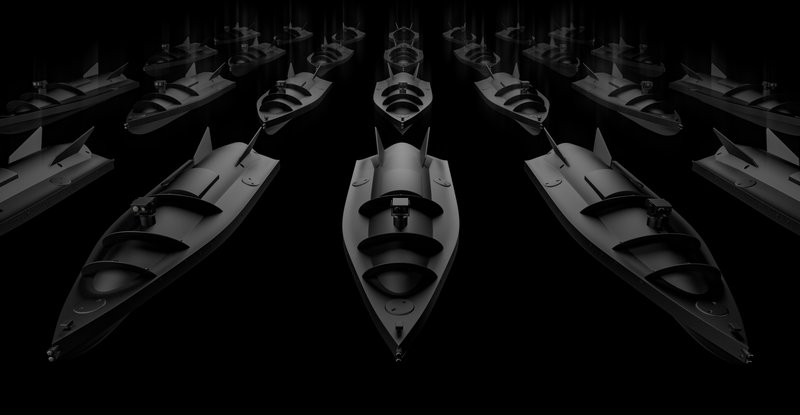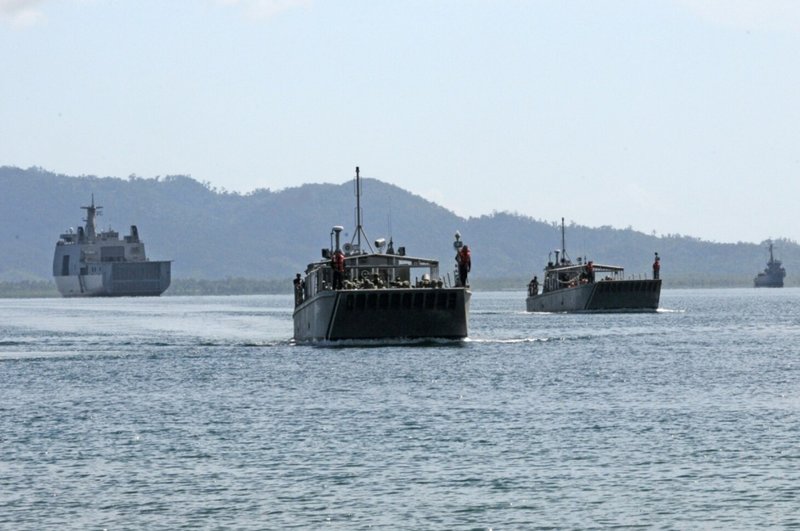It’s all politics – tracking long-term trends in naval procurement
December is often a time to review the year just (nearly) ended. But attempting to do justice to all the naval news and trends of 2023 in a newsletter article is no small task.
Across the world, new shipbuilding programmes have started, old ones have progressed or stalled, new missile (and anti-missile) systems have been tested, and fresh multi-domain and autonomous systems CONOPS have emerged... Continues below
Newsletter Sponsor:

Above: Naval operations in the Black Sea have lead to new CONOPS for uncrewed systems. (Image: United24)
So rather than attempting the impossible – and the impossibly frustrating – a broader view of decision-making cycles seems a sensible approach. Because defence is, ultimately, intrinsically very political. And like all things political it works in cycles, with the money following where the political focus goes.
For instance, there is no denying that over the past two years the war in Ukraine has kept political minds busy both in Europe and other countries who might seek to extract lessons learnt as the fighting continues – eg China and Taiwan.
Two of the key trends that have emerged from naval warfare in Ukraine have been new CONOPS around the use of uncrewed systems – whether aerial (UAV) or surface (USV) – and the resurgence of mine warfare.

Schiebel – leading the unmanned evolution
The former activity has provided a chance for navies around the world to finally be able to argue the case for uncrewed systems with concrete examples at hand. There is no longer mere speculation on how future warfare will be fought; hard reality has demonstrated that R&D as well as acquisition in this domain require focus and money.
Some countries, such as the US, UK, Australia and France, have been including uncrewed systems in their military planning for a few years already. Others nations however, appear to be leveraging what is happening around the world to finally take significant steps toward procuring these assets – eg Italy.
As for mine countermeasure (MCM) capabilities, these should probably never have fallen off the list of modernisation priorities in the first place.
With over 90% of internationally traded goods carried by sea, and so much reliance across the globe on specific resources – grain from Ukraine, rare earth materials in Asia – it should have come as no surprise that mine warfare would return as soon as tensions or conflict erupted. It is one of the cheapest and most effective ways to interdict passage and disrupt commerce.
Beyond the war in Ukraine, another significant trend that has attracted political thinking like a moth to a flame is seabed warfare.
Other articles in this newsletter:
Best defence? Confronting the complexities of naval C-UAS
Tipping the balance – can UK aid make a decisive difference for Ukraine’s Marine Corps?
The Nord Stream sabotage that took place in September 2022 and the damage to the Balticconnector pipeline in October this year have suddenly returned the world’s attention to the importance of protecting critical maritime infrastructure.
Again, this should hardly have come as a surprise. Over 99% of the data crossing our oceans is doing so by undersea cables. Offshore renewable energies have been growing significantly, again all connected to shore on the seabed.
Gas pipelines have been lining our sea floor for decades and, just as importantly, Russian submarines have been spotted several times loitering around cables throughout the years.
None of this is news. Yet navies had to wait for two major accidents to affect North European countries for more significant cashflow to be rerouted toward R&D for seabed warfare.
Is seabed warfare just a convenient new ‘mot du jour’ used to hide the fact that underwater warfare did not, until recently, include protection of critical maritime infrastructure?
Emerging trends are important. They tell us where research efforts should be focused and, in some cases, how new technologies can enable new CONOPS to adapt to a very fast-paced world. But they should not make us blind to everything else.
For instance, many of the projects and programmes highlighted in this year’s defence news involve multi-mission ships. These capabilities are largely adopted to be able to address a wide array of threats, from warfighting to humanitarian assistance and disaster relief (HADR).

Above: Despite an evolving threat profile for most nations, use of naval forces for disaster relief should not be forgotten. (Photo: USN)
The Philippines, for instance, is a country regularly affected by earthquakes, hurricanes and other natural disasters. As it embarks on a significant – and much-needed – naval modernisation, the importance of being able to defence itself against China should not overshadow the importance of protecting and rescuing its own population where needed.
Of course, the amount of money countries can dedicate to their defence budget is finite. And yes, projects should be prioritised. But not all priority projects make the headlines.
Much like protection of maritime infrastructure should have always been a priority, or MCM should have never ceased being one, the importance of other missions such as HADR should not be set aside in favour of more hot topics.
Don't want to miss out on future Decisive Edge content? Make sure you are signed up to our email newsletters.











